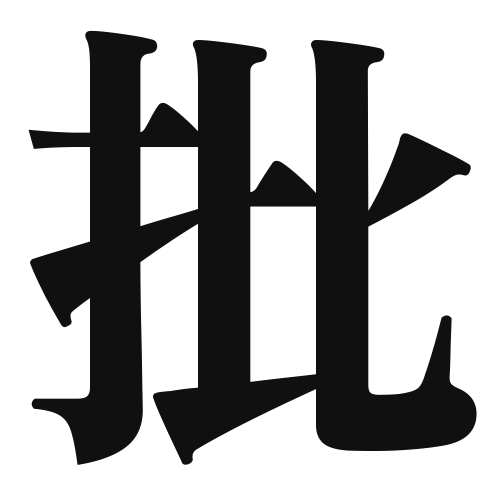1. Overview of Meaning
The kanji “批” (hi) generally means “to criticize,” “to review,” or “to judge.” It is often used in contexts where evaluation or assessment is involved.
2. Formation and Radical
Formation of the Kanji: The kanji “批” is a phonetic-ideographic character (形声文字). It combines the radical for “hand” (扌) with a phonetic component that suggests its pronunciation.
Radical: The radical of “批” is 扌, which relates to actions performed by hand, emphasizing the act of handling or dealing with something.
3. Examples of Usage
Common Words and Phrases: Some frequently used words that include “批” are 批判 (hihan – criticism) and 批評 (hihyō – review).
Example Sentences in Daily Conversation:
- 彼の意見に対して批判が多かった。 (Kare no iken ni taishite hihan ga takakatta.) – There was a lot of criticism against his opinion.
- この映画の批評はとても良い。 (Kono eiga no hihyō wa totemo yoi.) – The review of this movie is very good.
4. Synonyms and Antonyms
Similar Kanji: A similar kanji is “評” (hyō), which also means “to evaluate” or “to assess,” but it is more focused on the act of giving an opinion rather than criticism.
Opposite Kanji: An antonym could be “賞” (shō), which means “to reward” or “to praise,” indicating a positive evaluation as opposed to criticism.
5. Cultural and Historical Background
Relation to Japanese Culture: The concept of “批” is significant in Japanese culture, especially in contexts like art criticism, literary reviews, and academic evaluations.
Proverbs and Idioms: One common saying is “批評家は批判するが、創造者は創造する” (Hihyōka wa hihan suru ga, sōzōsha wa sōzō suru), which translates to “Critics criticize, but creators create,” highlighting the difference between those who evaluate and those who produce.
